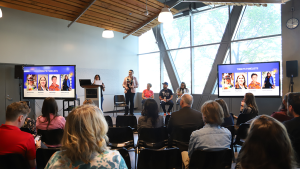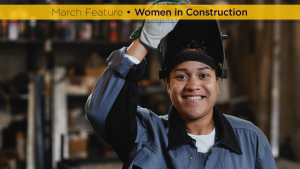The COVID-19 pandemic impacted all Canadian workers but women have been disproportionately affected, says Electricity Human Resources Canada (EHRC).
In an effort to rectify that imbalance the EHRC, a non-profit organization supporting the human resources needs of the Canadian electricity and renewable energy sectors, has produced a Returnship Toolkit.
It’s a compendium of resources that provides actionable ways for employers to connect, recruit and retain this segment of the workforce as they balance their caregiving responsibilities, says Michelle Branigan, the organization’s chief executive officer.
“Our toolkit offers employers information on engaging with an often overlooked demographic and works towards a gender-balanced industry,” says Branigan, adding women are under-represented in the electrical sector which has long been a male dominated space.
A section of the toolkit points out women leave the workforce for various reasons, “including caregiving, but also due to experiences of unwelcoming workplaces, barriers to learning and advancement, and lack of benefits that meet their needs.”
It references prominent Atkinson Foundation economist Armine Yalnizyan who coined the term “she-cession” in 2020 to describe the disproportionate impact the COVID-19 pandemic has had on female workers.
The EHRC identified the need for a toolkit after a member asked if there were any resources to support returning workers after a significant gap in employment, says its vice-president of program development Mark Chapeskie.
An example are women who have taken time off for significant caregiving responsibilities.
Asked to define caregiving responsibilities, he says it would primarily be the duties necessary to ensure the safety of a loved one.
“Often this is a young child but may also include eldercare for parents.”
Work on the toolkit began in April 2021 and was funded by the provincial government as a pilot focused on Toronto and area electricity employers.
It was created by a six-member advisory committee comprised of representatives from Burlington Hydro, Ontario Power Generation, Elexicon Energy, Women of Power Line Technicians, S & C Electric and the Nuclear Waste Management Organization.
Due to the pandemic all its meetings were virtual ones and a number of key issues were examined, he says.
“How do we reach this group (returning employees) to promote work opportunities? What messaging should we include and what channels for distribution of work opportunities should we consider?”
Other questions addressed by the committee included what measures could be implemented to structure work opportunities to be inclusive to employees who still have caregiving responsibilities, and what is the profile of a caregiver, says Chapeskie.
While the creation of the toolkit was due to a partnership undertaking by Greater Toronto Area-based electrical utilities, the lessons learned are certainly applicable to organizations outside of the GTA and outside of the electrical sector.
“In fact, several of the case studies referenced in the toolkit include companies from outside the industry such as IBM.”
And the EHRC is sharing the toolkit with non-electrical associations and employers, he says.











Recent Comments
comments for this post are closed